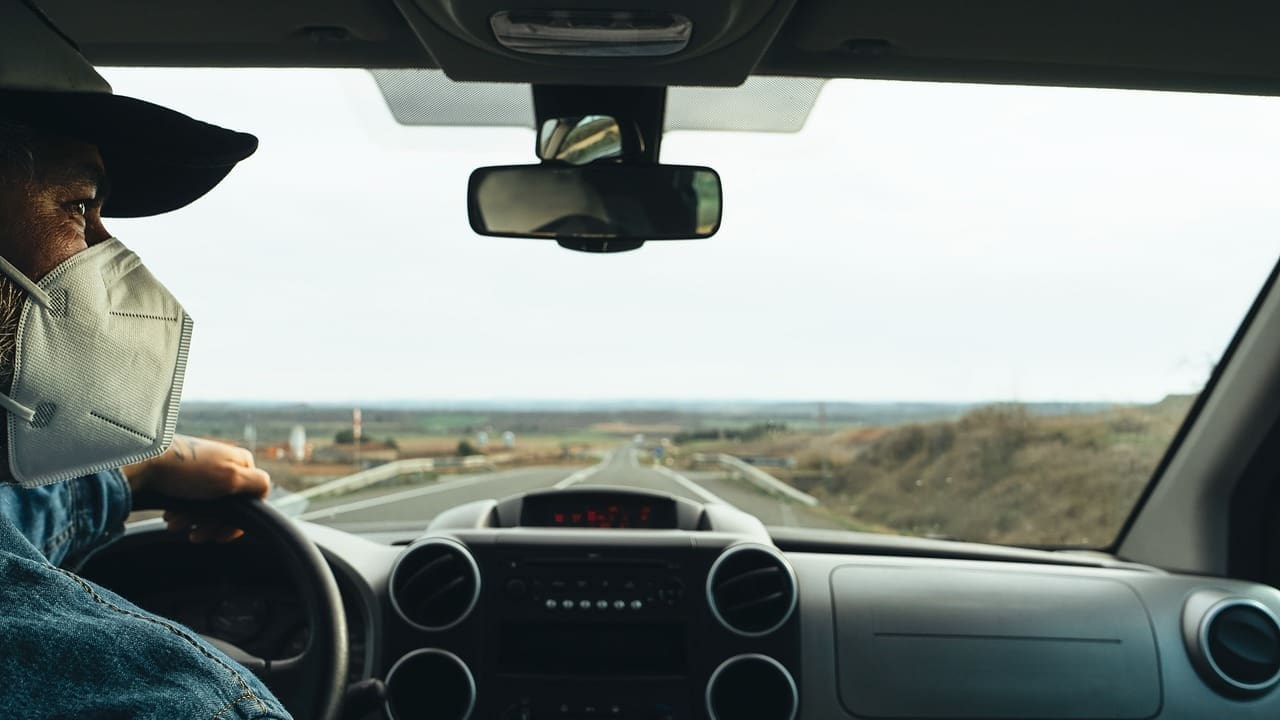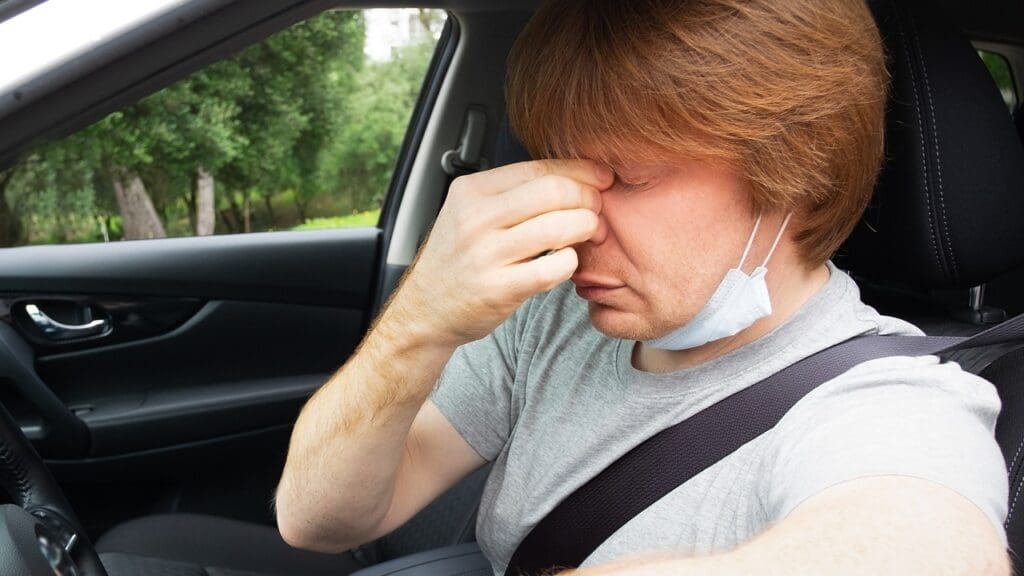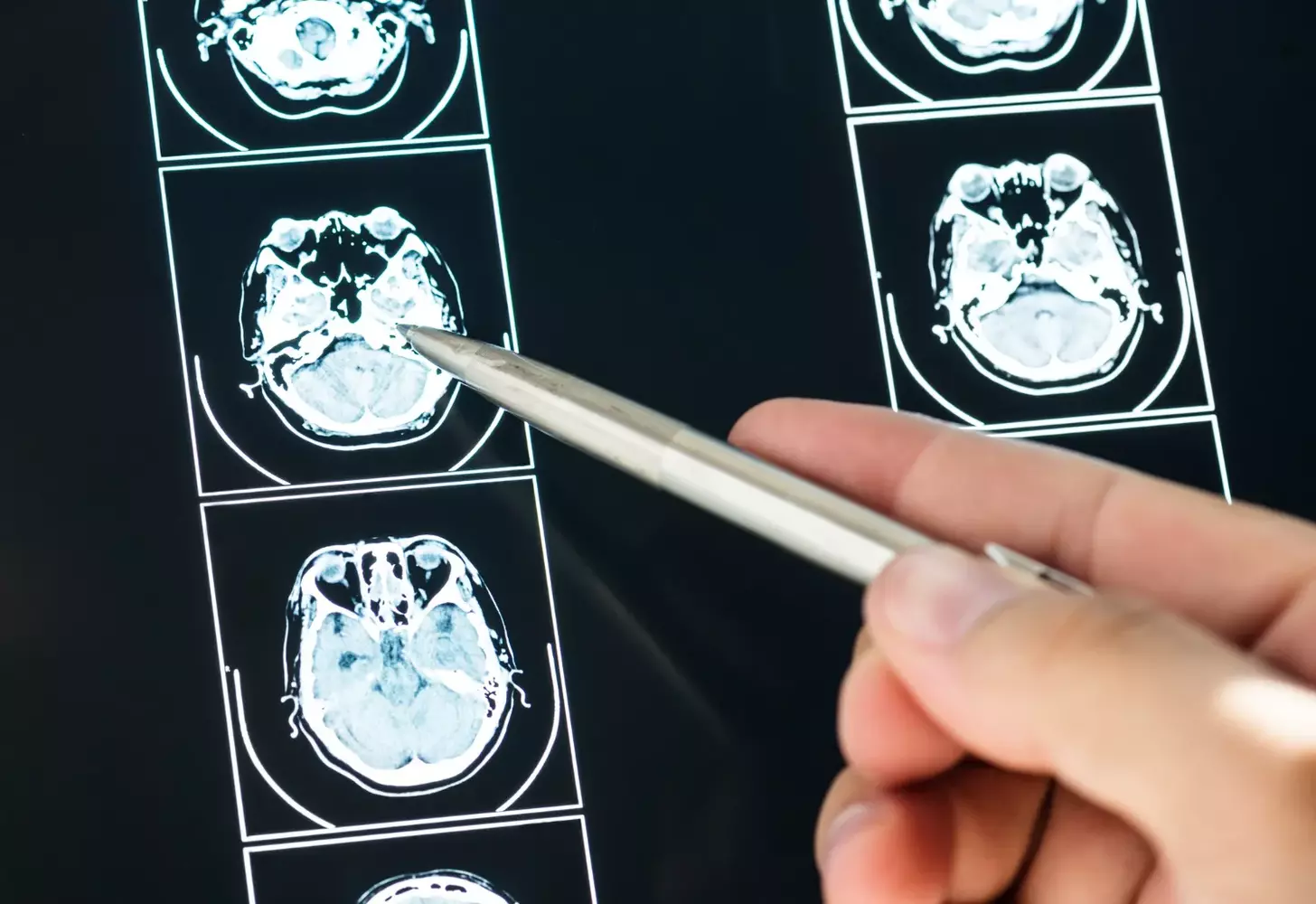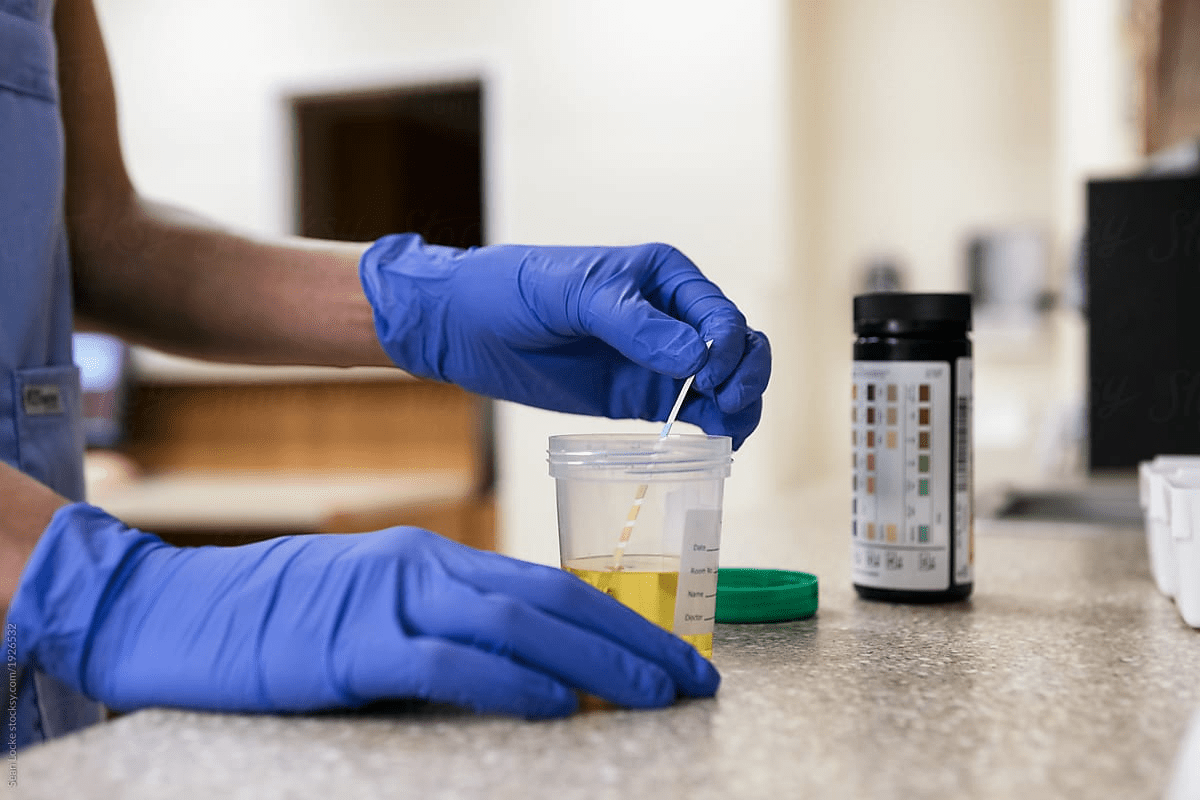Last Updated on November 27, 2025 by Bilal Hasdemir

Going through chemotherapy or radiation treatment is tough, and many wonder if it’s safe to drive. At Liv Hospital, we know how to balance treatment with safety.
Driving after chemotherapy or radiation treatment varies by person and treatment. Studies show more cancer patients are using tech to manage their care. This helps them make smart choices about their daily lives.
We aim to give top-notch care and support to our patients from around the world. In this article, we’ll talk about the safety of driving after chemotherapy or radiation treatment.
Key Takeaways
- Check how you feel before driving.
- Think about the side effects of your treatment.
- Know how your treatment affects your driving skills.
- Follow the rules for driving again after treatment.
- Talk to your doctor for advice that fits you.
The Effects of Cancer Treatments on Driving Capabilities
Cancer treatments like chemotherapy and radiation can really affect a person’s ability to drive. These treatments can cause physical symptoms that make driving hard.
Physical Symptoms That May Impair Driving
Chemotherapy, in particular, has many side effects that can impact driving. Let’s look at these symptoms closely.
Fatigue and Reduced Alertness
One big side effect of chemotherapy is fatigue. It can make a person less alert and slower to react while driving. Research shows that cancer patients on chemotherapy might have trouble concentrating and remembering things. This makes it unsafe for them to drive right after treatment.
Nausea and Sudden Illness
Nausea and sudden illness are also side effects of chemotherapy that can be dangerous while driving. If a patient is feeling these symptoms, they should not drive until they feel better.
It’s important for patients to understand these risks to make smart choices about getting around during cancer treatment. We suggest talking to a healthcare provider about driving after chemotherapy or radiation therapy.
Can You Drive After Chemotherapy? Understanding the Risks
Chemotherapy can cause side effects that might make it hard to drive safely. Patients often wonder if they can drive after treatment. The answer depends on the type of chemotherapy, how well they can handle it, and any side effects that could affect driving.
Immediate Post-Treatment Considerations
After chemotherapy, patients are usually told not to drive themselves home if they’re not feeling well. This is because driving after chemotherapy can increase the risk of accidents, mainly in the first 24-48 hours.
First 24-48 Hours After Treatment
In the first 24-48 hours, patients might feel tired, dizzy, or have other side effects that could make driving risky. It’s best to avoid driving during this time if you can. Having someone with you or finding another way to get home is safer.
Cumulative Effects of Multiple Sessions
As you have more chemotherapy sessions, you might get more tired or have other side effects. It’s important to watch how you feel and plan your travel carefully.
Knowing the risks and taking the right steps can help patients stay safe while driving after chemotherapy. By understanding the side effects and planning ahead, patients can reduce the risks of driving after treatment.
Transportation Planning for Chemotherapy Appointments
Planning how to get to chemotherapy appointments is key. Patients must think about their options to ensure they get there safely and comfortably.
Can You Drive Yourself to Chemo Appointments?
Many wonder if they can drive to their chemo sessions. It depends on the type of chemo and the patient’s health.
First Treatment Considerations
For the first chemo session, it’s best not to drive. You might feel tired, dizzy, or nauseous.
Subsequent Appointments
For later sessions, check how you feel before driving. If you’re not well, have someone else drive you.
Having a friend or family member drive you can help. It can lead to better outcomes and fewer side effects. If unsure, look into other ways to get there.
| Transportation Option | Benefits |
|---|---|
| Family/Friend | Emotional support, flexible scheduling |
| Public Transport | Cost-effective, reduces parking stress |
| Transportation Services | Professional drivers, comfortable vehicles |
Medication Effects on Driving During Cancer Treatment
Medications for cancer treatment can make driving harder. It’s key to know how these drugs affect our driving skills.
Common Medications That Affect Driving Ability
Cancer patients take meds to manage symptoms. Anti-nausea and pain meds are two types that can impact driving.
Anti-Nausea Drugs
Anti-nausea meds help with chemo side effects. But, they can make you feel sleepy, dizzy, and see things blurry. It’s important to be careful and not drive until you know how they affect you.
Pain Management Medications
Pain meds, like opioids, can also make driving hard. They can make you feel sleepy, confused, and slow to react. Always talk to your doctor about these side effects.
| Medication Type | Potential Side Effects | Driving Precautions |
|---|---|---|
| Anti-Nausea Drugs | Drowsiness, dizziness, blurred vision | Avoid driving until familiar with side effects |
| Pain Management Medications | Sedation, confusion, slowed reaction times | Discuss with healthcare provider, consider alternative transportation |
Knowing the side effects of these meds and taking steps to stay safe can help. This way, cancer patients can drive safely.
Self-Assessment Tools for Driving Fitness During Treatment
Checking if we’re fit to drive is key when we’re getting cancer treatment. Treatment can change how we move and think, making driving harder.
To drive safely, we must check our physical and mental state. This means looking at our motor skills, how well we coordinate, and how tired we are.
Physical Readiness Evaluation
It’s important to check if we can drive safely. We need to look at our:
- Reaction time
- Muscle strength
- Coordination
Motor Skills and Coordination Tests
There are simple tests to check our motor skills and coordination. For example:
- Touching fingertips together
- Walking in a straight line
- Reaction time tests
Fatigue Assessment
Fatigue is a big side effect of cancer treatment. We should check how tired we are by:
- Watching our energy levels all day
- Not driving when we’re very tired
- Taking breaks on long drives
Using these tools helps us decide if we’re ready to drive during treatment.
Can You Drive After Radiation Therapy?
It’s important for patients to know how radiation therapy affects driving. This treatment is common for many cancers. It can cause side effects that might make driving hard.
Typical Side Effects of Different Radiation Treatments
The side effects of radiation therapy depend on the type and where it’s applied. Patients often feel tired, have skin issues, and changes in bowel habits.
External Beam Radiation
External beam radiation therapy (EBRT) uses a machine outside the body to target tumors. EBRT can make you very tired, which might make driving hard. You might also get skin irritation, but that usually doesn’t affect driving.
Internal Radiation (Brachytherapy)
Internal radiation, or brachytherapy, puts radioactive material inside or near the tumor. Side effects vary based on where it’s placed. For example, pelvic brachytherapy can lead to urinary or bowel issues. These issues can be uncomfortable but usually don’t make driving unsafe unless they’re very distracting.
Patients should talk to their doctor about their treatment and side effects. If side effects are mild, driving might be okay. But if they’re severe, you might need help.
Managing Transportation to Radiation Appointments
Many patients wonder if they can drive themselves to radiation appointments. This is a big question that needs careful thought. Radiation therapy is a common treatment for many cancers. Patients often need to visit the treatment center many times.
Driving to Radiation Therapy Sessions
Whether you can drive yourself depends on your health and the treatment’s side effects. After the first session, doctors usually suggest trying to drive. But, it’s important to check how you feel first.
First Session Recommendations
For the first session, it’s best to have someone with you. This helps doctors see how you feel after treatment. They can then decide if you can drive safely.
Daily Treatment Transportation Planning
Research shows that having someone drive you can lead to better results and fewer side effects. So, if you’re feeling any symptoms that might affect your driving, plan for a ride.
| Transportation Option | Advantages | Disadvantages |
|---|---|---|
| Driving Self | Independence, convenience | Potential safety risks if side effects occur |
| Family/Friend | Support, safety | Dependence on others |
| Public Transport | Cost-effective, accessible | May be challenging for patients with mobility issues |
Post-Chemotherapy Care at Home: Returning to Driving
After chemotherapy, it’s important to think about when you can drive again. You need to check how well you’re physically and mentally recovering. This helps make sure you’re safe on the road.
Recovery Milestones for Safe Driving
There are important signs that show you’re ready to drive. These include getting stronger, more energetic, and mentally sharper.
Physical Recovery Indicators
Here are the signs you’re ready to drive:
- Having enough strength to drive safely
- Being able to drive for a long time without getting tired
- Not feeling too much pain or discomfort while driving
Cognitive Function Restoration
It’s also key to get your mind back to normal. You should:
- Be able to focus and make quick decisions while driving
- Not get confused or forget things
- React well to surprises on the road
Studies show that getting good care at home after chemo helps a lot. By paying attention to these signs, you can drive safely again and feel more independent.
Legal and Insurance Considerations During Cancer Treatment
It’s important for patients to understand the legal and insurance sides of cancer treatment. This knowledge helps them make smart choices about their care. They must think about how these factors might affect their ability to drive.
Medical Reporting Requirements
Patients might need to tell their state’s Department of Motor Vehicles (DMV) about their health. Not doing so can lead to legal trouble. Each state has its own rules, so it’s key to know what’s required in your area.
State-Specific Regulations
States have different rules about reporting health issues that might affect driving. For example, some states ask about conditions that slow down thinking or reaction time. It’s a good idea to check with your state’s DMV for the exact rules.
Physician Documentation
Doctors are vital in documenting a patient’s health and how it affects driving. It’s important to have clear and detailed records for insurance and legal reasons. Patients should talk to their doctors about their driving to help get the right documentation.
Communicating With Your Healthcare Team About Driving
Talking to your healthcare team about driving after cancer treatment is key. They can tell you how your treatment might affect your driving skills. Your oncologist and other healthcare providers have valuable insights to share.
Essential Questions for Your Oncologist
When you talk to your oncologist about driving, ask these important questions:
- How will my treatment affect my reaction time and coordination?
- Are there any specific medications that could impair my driving?
- What are the possible short-term and long-term effects of my treatment on my driving?
Treatment-Specific Driving Restrictions
Different treatments can affect your driving in different ways. Some chemotherapy drugs can make you feel tired or dizzy. Radiation therapy might cause skin reactions that could make driving uncomfortable.
Personalized Timeline Recommendations
Your healthcare team can give you a timeline for when it’s safe to drive again. It’s important to follow their advice to stay safe and protect others on the road.
By working with your healthcare team, you can make smart choices about driving after cancer treatment.
Community Resources and Support for Transportation
Cancer patients often struggle to get to treatment centers. But, there are community resources to help.
Many organizations have transportation programs for cancer patients. These programs aim to ease the stress of getting to appointments.
Cancer Organization Transportation Programs
The American Cancer Society Road to Recovery is one such program. It offers rides to treatment for those in need. Volunteers drive patients to their appointments.
For more info on transportation services, visit cancer.ca/en/living-with-cancer/how-we-can-help/transportation. It guides you on available options.
Local Support Services
There are also local support services for transportation help. These services differ by location but are key for patients without reliable transport.
Conclusion: Balancing Independence and Safety After Cancer Treatment
As we wrap up our talk on driving after cancer treatment, it’s clear that balancing independence and safety is key. Studies show that those who find this balance do better and have fewer side effects. We’ve looked at how physical symptoms, medication, and planning trips affect driving during treatment.
To drive safely, check if you’re physically ready and talk to your doctor. Look into community help for getting around. For details on driving after treatments like stem cell transplants, check out Liv Hospital’s guide. By knowing the risks and taking steps to stay safe, patients can keep their freedom while staying safe.
We’re here to support our patients through their cancer journey. We offer full care and advice to help them face treatment’s challenges. Together, we aim to help patients find a balance between being independent and staying safe, leading to the best results.
FAQ
Can you drive yourself to chemo appointments?
It depends on how you’re feeling. Chemotherapy can make you tired, nauseous, and dizzy. It’s best to have someone with you or use another way to get there.
Can you drive after chemotherapy?
No, it’s not safe to drive right after chemo. You might feel sleepy, dizzy, or have other side effects. Wait until you feel better before driving.
How do you feel after chemotherapy?
After chemo, you might feel very tired, sick to your stomach, or in pain. Rest a lot and follow your doctor’s advice on handling these side effects.
Can you drive after radiation therapy?
Radiation can make you tired, which might affect your driving. But, how it affects you can vary. Always check with your doctor for advice.
Can you drive yourself to radiation appointments?
If you’re feeling okay, you can drive to radiation appointments. But, it’s a good idea to have someone with you in case you get sick during or after treatment.
What is post-chemotherapy care at home?
At home, you need to manage side effects, rest, and follow your doctor’s recovery plan. This includes watching how your body and mind are doing, which is key for safe driving.
When can you resume driving after chemotherapy?
When you can start driving again after chemo depends on how you react to treatment and what chemo you had. Always talk to your doctor about when it’s safe to drive.
What are the recovery milestones for safe driving?
To safely drive again, you need to get your strength, thinking, and quickness back. Your doctor will check if you’re ready to drive.
Are there community resources for transportation during cancer treatment?
Yes, there are many resources and programs from cancer organizations to help with transportation during treatment. We can help you find them.
What questions should you ask your oncologist about driving?
Important questions to ask your oncologist include: “Can I drive after chemo or radiation?” “What side effects might affect my driving?” and “When can I safely drive again?”
References
- Canadian Cancer Society: https://cancer.ca/en/living-with-cancer/coping-with-changes/daily-life-during-treatment
- Oncology Nursing News: https://www.oncnursingnews.com/view/should-your-patient-be-driving








